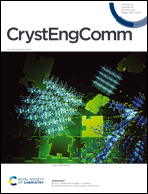Design of double-shell TiO2@SnO2 nanotubes via atomic layer deposition for improved lithium storage
Abstract
Sn-Based anode materials have garnered enormous attention owing to their high theoretical capacity and abundance. However, large volume expansion during cycling leads to fast decay of their electrochemical performance. To overcome this issue, TiO2@Void@SnO2 double-shell hollow nanotubes are synthesized by combining a hydrothermal method and atomic layer deposition (ALD) to enhance their electrochemical properties. Galvanostatic discharge/charge tests reveal that TiO2@Void@SnO2 exhibits a relatively stable capacity of 798 mA h g−1 after 100 cycles at 100 mA g−1, while TiO2@SnO2 and SnO2 maintain 637 and 211 mA h g−1, respectively. In addition, it also shows excellent long cycling stability (605 mA h g−1 at 1000 mA g−1 even after 1000 cycles). The improved electrochemical performances of TiO2@Void@SnO2 in comparison to TiO2@SnO2 and SnO2 originate from its unique structure. The abundant space between the double shells can effectively accommodate the volume change, and the TiO2 shell can prevent pulverization of SnO2. The strategy proposed in this work enables the design of efficient structure to optimize the electrochemical performance of energy storage materials.

- This article is part of the themed collection: Nanomaterials


 Please wait while we load your content...
Please wait while we load your content...